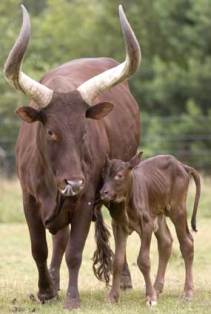NAIROBI (AFP) — Kenyan scientists said Wednesday they had rescued endangered Grevy’s zebras from possible extinction after an outbreak of deadly anthrax last year and were working to increase their population.
The Kenya Wildlife Service (KWS) said “quick intervention” had saved the animals, known for their narrow and finer stripes and large ears, from being wiped out by the disease, which was exacerbated by a recent drought in the scrub-peppered northern Kenya plains.
“After we got reports that the Grevy’s zebras were dying, we mobilised our teams and carried out mass vaccinations against anthrax and treated other diseases,” Patrick Omondi, KWS head of species management, told AFP.
“We contained the threat and ensured that their population, which is extremely low, does not reduce further. We are now working on a five-year programme to increase their population.”
Omondi said the programme, in which Ethiopia is involved, includes creating protected breeding sanctuaries.
Fewer than 2,000 Grevy’s zebras are believed to live in the wild.
About 1,800 live near sprawling plains in and around Kenya’s central Samburu National Reserve, about 230 kilometers (145 miles) north of Nairobi, and the rest in southern Ethiopia.
Conservationists warned of possible extinction after the outbreak in Samburu, one of the animals’ last remaining habitats in the world.
“Due to the alarming deaths, we knew the threat was real and we moved into action,” said Francis Gakunya, KWS’s chief veterinarian.
The Grevy’s zebra’s existence is also threatened by encroachment into their habitat owing to an explosion of human settlement and migrations.
In addition to drying up watering holes and making food scarce, the recent drought stirred up naturally occurring anthrax spores from the parched earth which exacted a heavy toll on the Grevy’s zebra, a species less hardy than its mountain and plains cousins, officials say.
But the KWS said it had launched programmes to stop human-wildlife conflict that is rampant across the east African nation, home to a variety of wildlife species.
Conservationists say the Grevy’s zebra population has decreased from 15,000 across eastern Africa region in 1970 to less than 2,000 that currently live only in arid habitats in northern Kenya and Ethiopia.
Poaching for meat and their valuable hide decimated populations in Eritrea, Djibouti and western Somalia.
While the zebras are prey for lions, cheetahs and hyenas, their population was hit hardest by hunting due to the demand in the fashion world for the animals’ striking black-and-white hides.
In the 1970s, the Convention on International Trade in Endangered Species (CITES) of Wild Fauna and Flora banned the trade in Grevy’s zebra pelts, and their numbers began to increase after 1977 when Kenya, home to the largest populations, banned hunting.
Activists led by the African Wildlife Foundation are now pressing authorities to upgrade the Grevy’s zebra “game animal” to “protected animal” under Kenyan law, warning that the species would be hunted again if the CITES ban is ever lifted.
In 2000, the species was listed as “endangered” on the World Conservation Union’s Red List of Threatened Animals.
Grevy’s zebra were named after Jules Grevy, a 19th-century French president who received one as a gift from Ethiopia’s Emperor Menelik in 1882. They are the largest, wildest and most difficult to tame of the three zebra species.
In addition to those living in the wild in east Africa, about 220 Grevy’s zebras are housed in zoos around the world.


